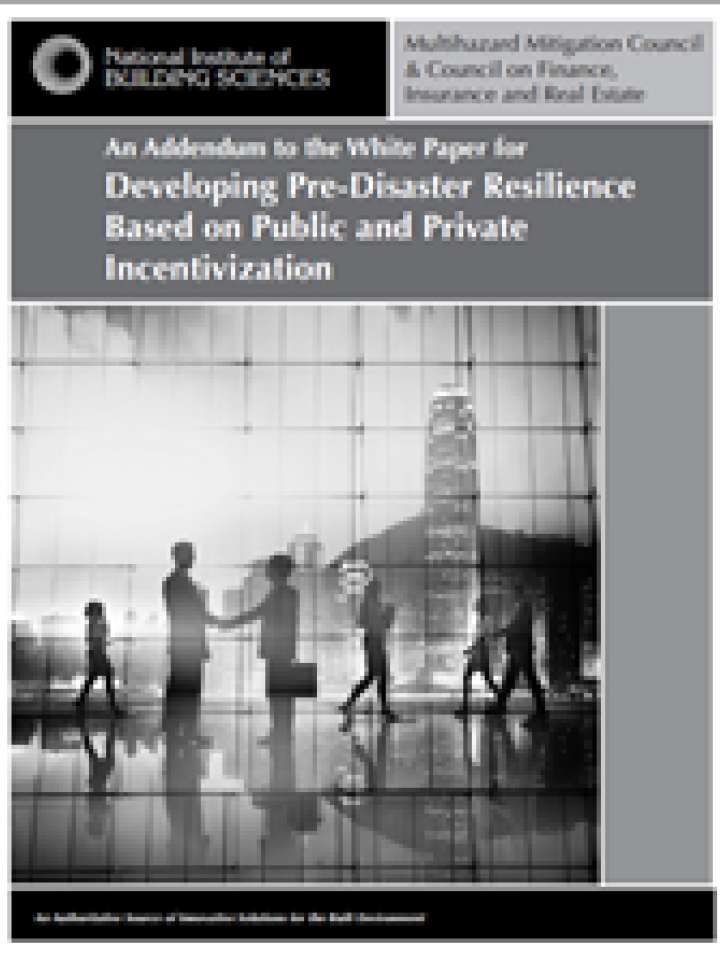An addendum to the white paper for developing pre-disaster resilience based on public and private incentivization
This addendum to the white paper supports the case for the incentivization of resilience-building actions and policies to reduce the effects of disasters. It then redefines the relationship of incentives to definitions of resilience, describes the goal of resilience in a world of incentives, adds to characteristics of incentivization that govern how it is applied and provides additional insights on technical support for incentivization, including valuations and the flow of information on resilience.
Five tables of layered incentive programs provide examples for maximizing the impact of incentives for an office building, a utility, a residence, community level housing, and affordable housing, and furnish approaches for stakeholder construction of comprehensive incentivization programs. The addendum then outlines the role of stakeholders for developing incentivization strategies and conducting pilot studies for incentives-based resilience in communities.
Incentivization is an approach that currently holds the most potential for reaching a solution to the chronic problem of underfunding for much-needed mitigation to reduce the effects of disasters. Going forward, it will be important to frame incentivization in terms of its overall goal and characteristics so that policymakers and stakeholders understand how best to proceed in implementing the incentivization mechanisms to support achieving resilience.
Explore further
